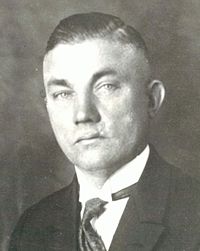Abraham Esau Scientist
Robert Abraham Esau (7 June 1884 – 12 May 1955) was a German physicist.After receipt of his doctorate from the University of Berlin, Esau worked at Telefunken, where he pioneered very high frequency (VHF) waves used in radar, radio, and television, and he was president of the Deutscher Telefunken Verband. During World War I, he was a prisoner of war of the French; he was repatriated to Germany in 1918. In 1925, he was appointed professor at the University of Jena, where he also served as rector. From 1933, Esau was the State Councilor in Thuringia.From 1937, Esau was head of the physics section of the newly created Reich Research Council (RFR). From 1939, he was a professor at the University of Berlin and president of the Reich Physical and Technical Institute. From his position in the RFR, he initiated the first meeting of the Uranium Club in early 1939, the precursor to the Army Ordnance Office (HWA) German nuclear energy project, which began in September of that year. When the HWA gave control of the project to the RFR in 1942, Esau became the plenipotentiary of nuclear physics and was in control of the project. In 1944, Esau became the plenipotentiary of the high-frequency engineering and radar working group.During World War II, Esau was one of the most powerful physicists in Germany. After World War II until 1948, Esau was a prisoner of war of the Dutch. From 1949, Esau was a visiting professor of short-wave technology at the RWTH Aachen. From 1953, he was also head of the Institute of High-Frequency Engineering of the German Aeronautical Research Institute.
Personal facts

| Birth date | June 07, 1884 |
|---|---|
| Birth place | |
| Nationality | |
| Citizenship | |
| Date of death | May 12, 1955 |
| Place of death | |
| Residence | |
| Education | |
| Known for |